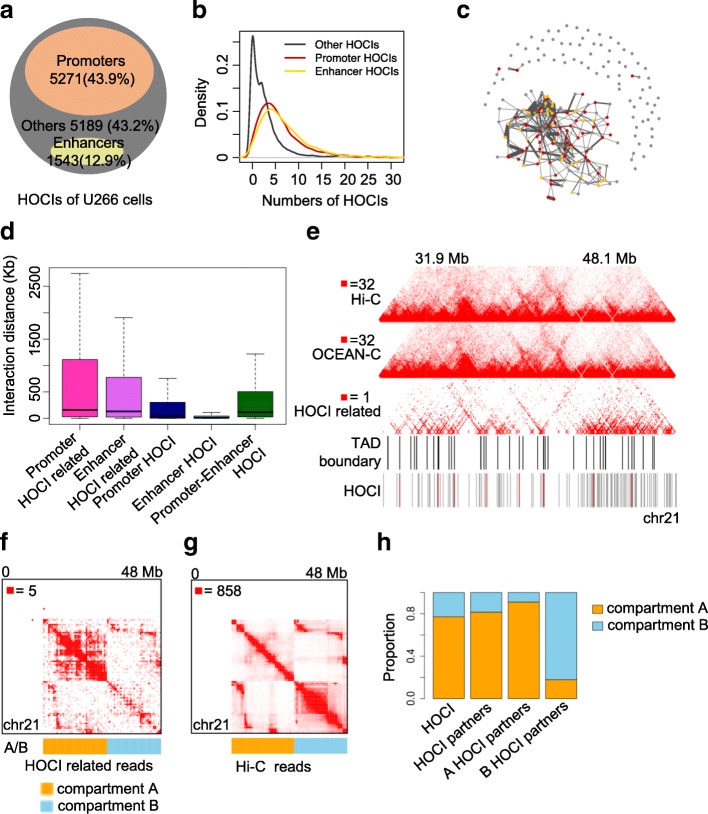Fig. 3.
Characteristics of HOCIs. a The proportion of three types of HOCIs (U266): promoters, enhancers, and others. b Density distribution of the number of HOCIs interacting with different types of HOCIs. c Interaction network formed by HOCIs in chromosome 21 (U266). Red node, promoter HOCI; yellow, enhancer HOCI; gray, other HOCI. The thickness of edges indicates the interaction intensity between two HOCIs. d Interaction distance between HOCIs and their interacting regions. ‘Promoter HOCI related’ means that at least one end of a valid read pair is mapped to promoter HOCIs; ‘enhancer HOCI related’ means that at least one end of a read pair is mapped to enhancer HOCIs; when both ends of a read pair belong to promoter HOCIs or enhancer HOCIs, the read pair is classified as ‘Promoter HOCI’ and ‘enhancer HOCI’, respectively; when two ends of a read pair separately map to a promoter HOCI and an enhancer HOCI, the read pair is classified as ‘Promoter-Enhancer HOCI’. e Heat maps showing Hi-C, OCEAN-C, and HOCI-related reads in chromosome 21 at 40 kb resolution. f Heat map of HOCI-related reads in chromosome 21 (U266) at 40-kb resolution with bins reordered by A/B compartments. Only valid pairs with at least one end mapped to HOCIs are defined as HOCI-related reads and used to generate the interaction heat map. g Heat map of Hi-C reads in chromosome 21 (U266) at 40-kb resolution with bins reordered by A/B compartments. h Proportions of HOCIs located in compartment A/B (U266). HOCI stands for all the HOCIs detected by OCEAN-C, HOCI partners indicate other loci that interact with all HOCIs or those HOCIs located in A or B compartments

